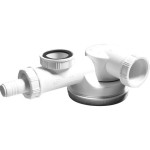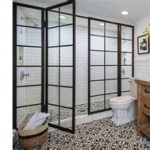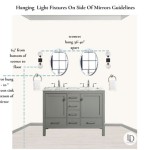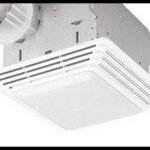What Paint To Use For Bathroom Countertops: A Comprehensive Guide
Bathroom countertops endure a substantial amount of wear and tear. They are subjected to moisture, spills, cleaning chemicals, and constant use. Choosing the right paint for a bathroom countertop is crucial to ensure durability, aesthetics, and longevity. This article provides a comprehensive guide to selecting the appropriate paint for bathroom countertops, encompassing different paint types, preparation techniques, application methods, and necessary precautions.
Understanding the Challenges of Painting Bathroom Countertops
Painting bathroom countertops presents unique challenges due to the humid environment and the potential for water damage. The chosen paint must be resistant to moisture, mold, and mildew. Moreover, it needs to withstand frequent cleaning with various products, some of which may contain harsh chemicals. The paint must also adhere properly to the existing countertop material, whether it is laminate, tile, or a solid surface. Improper paint selection or application can lead to peeling, chipping, staining, and ultimately, countertop failure.
The original countertop finish will also influence the preparation required. Laminate, for example, often has a slick surface that requires specialized primers to ensure proper adhesion. Tile countertops, with their grout lines, necessitate careful attention to detail to achieve a smooth and even finish. The existing condition of the countertop, including chips, scratches, and stains, must be addressed before painting to create a flawless final product.
Furthermore, the intended use of the bathroom countertop should be considered. A countertop primarily used for storing toiletries will experience less stress than one frequently used for applying makeup or styling hair. The level of durability required will influence the selection of both the paint and the topcoat.
Exploring Different Paint Types for Bathroom Countertops
Several paint types can be considered for bathroom countertops, each offering distinct advantages and disadvantages. Understanding the characteristics of each type helps in making an informed decision tailored to specific needs and preferences.
Epoxy Paint: Epoxy paint is a two-part system consisting of a resin and a hardener. When mixed, these components create a highly durable and water-resistant coating. Epoxy paint is known for its exceptional adhesion, hardness, and resistance to chemicals, making it a popular choice for high-traffic areas and surfaces exposed to harsh conditions. It offers excellent protection against moisture, stains, and scratches, ideal for the bathroom environment. However, epoxy paint can be more challenging to apply than other types, requiring careful mixing and application to avoid imperfections. It also tends to have a shorter working time, necessitating efficient application. Proper ventilation is crucial due to the strong fumes produced during application and curing.
Acrylic Latex Paint: Acrylic latex paint is a water-based option that is user-friendly and readily available. It offers good adhesion, durability, and color retention. While not as durable as epoxy, high-quality acrylic latex paints formulated for kitchens and bathrooms are moisture-resistant and can withstand regular cleaning. Look for paints specifically labeled as mold and mildew resistant. Acrylic latex paint is easier to apply and clean up than epoxy, making it a suitable choice for DIY projects. Multiple coats are typically required to achieve adequate coverage and durability. A clear topcoat is essential to enhance the paint's resistance to water and stains.
Polyurethane Paint: Polyurethane paint is known for its exceptional hardness, scratch resistance, and chemical resistance. It forms a tough, durable film that can withstand heavy use and frequent cleaning. Polyurethane paint is available in both water-based and oil-based formulations. Water-based polyurethanes are low in VOCs (volatile organic compounds) and easier to clean up, while oil-based polyurethanes offer superior durability and a richer finish. Polyurethane paint is a good option for bathroom countertops that experience heavy use and require a high level of protection. Similar to epoxy, proper ventilation is necessary due to the fumes produced during application.
Chalk Paint: Chalk paint is a decorative paint known for its matte finish and ability to adhere to various surfaces with minimal preparation. While chalk paint offers a unique aesthetic, it is not inherently durable or water-resistant. Therefore, it is crucial to seal chalk paint with a high-quality sealant specifically designed for bathroom environments. Several coats of sealant are necessary to provide adequate protection against moisture and stains. Chalk paint is a good option for those seeking a specific aesthetic and are willing to invest in proper sealing to ensure durability.
Preparing the Bathroom Countertop for Painting
Proper preparation is paramount to achieving a successful and long-lasting paint job on a bathroom countertop. Thorough preparation ensures optimal adhesion, a smooth finish, and enhanced durability. Skipping preparation steps can lead to paint failure, resulting in peeling, chipping, and a less-than-desirable outcome.
Cleaning and Degreasing: The first step is to thoroughly clean the countertop to remove any dirt, grease, soap scum, and other contaminants. Use a degreasing cleaner designed for the specific type of countertop material. Rinse the surface thoroughly with clean water and allow it to dry completely. This step is crucial for ensuring proper adhesion of the primer and paint.
Sanding: Sanding the countertop creates a slightly rough surface, providing a better grip for the primer and paint. Use a medium-grit sandpaper (around 120-180 grit) to lightly sand the entire surface. Pay particular attention to any glossy areas, as these tend to resist adhesion. After sanding, remove all dust with a tack cloth or a damp cloth. For laminate countertops, sanding is essential to break the smooth surface and promote adhesion.
Repairing Damage: Address any chips, scratches, or cracks in the countertop before painting. Use a suitable filler or epoxy repair compound to fill in the imperfections. Allow the filler to dry completely according to the manufacturer's instructions. Once dry, sand the filled areas smooth and flush with the surrounding surface. This step ensures a uniform and flawless finish.
Priming: Applying a primer is crucial for promoting adhesion, blocking stains, and creating a uniform base for the paint. Choose a primer specifically designed for the type of countertop material and the paint being used. For laminate countertops, use an adhesion primer that is formulated to bond to slick surfaces. Apply the primer in thin, even coats, following the manufacturer's instructions. Allow the primer to dry completely before applying the paint. Depending on the countertop material and condition, multiple coats of primer may be necessary.
Taping: Use painter's tape to protect surrounding surfaces, such as walls, sinks, and backsplashes, from paint splatters. Apply the tape carefully and press it firmly to create a tight seal. This step ensures clean and professional-looking edges.
Applying the Paint and Topcoat
The application of the paint and topcoat is a critical step that determines the final appearance and durability of the countertop. Careful attention to detail and proper technique are essential for achieving a smooth, even, and long-lasting finish.
Paint Application: Apply the paint in thin, even coats, using a high-quality brush or a foam roller. Avoid applying thick coats, as this can lead to drips, runs, and uneven drying. Allow each coat to dry completely before applying the next. For most paint types, two to three coats are recommended for adequate coverage and durability. Lightly sand between coats with fine-grit sandpaper (around 220-320 grit) to remove any imperfections and create a smooth surface for the next coat. Ensure proper ventilation during the painting process to prevent the buildup of fumes.
Topcoat Application: A clear topcoat is essential for protecting the paint from moisture, stains, and scratches. Choose a topcoat specifically designed for bathroom environments. Polyurethane topcoats are a popular choice due to their durability and water resistance. Apply the topcoat in thin, even coats, following the manufacturer's instructions. Allow each coat to dry completely before applying the next. Multiple coats of topcoat are recommended for maximum protection. Lightly sand between coats with fine-grit sandpaper to remove any imperfections and create a smooth surface for the next coat.
Curing Time: Allow the paint and topcoat to cure completely before using the countertop. The curing time varies depending on the type of paint and topcoat used. Consult the manufacturer's instructions for specific curing times. Avoid placing heavy objects or exposing the countertop to moisture during the curing process. Rushing the curing process can compromise the durability of the finish.
Post-Application Care: Once the countertop is fully cured, maintain it with regular cleaning using mild soap and water. Avoid using abrasive cleaners or harsh chemicals, as these can damage the paint and topcoat. Wipe up spills promptly to prevent staining. Consider using a cutting board when preparing food on the countertop to prevent scratches. With proper care, a painted bathroom countertop can provide years of beauty and functionality.
:strip_icc()/101922779-2cbc45e123c34827afb4f601723b03ca.jpg?strip=all)
How To Paint Bathroom Countertops

Paint Bathroom Vanity Countertop Sink So Easy A Piece Of Rainbow

How To Easily Spray Paint Bathroom Countertops My Homier Home

Paint Bathroom Vanity Countertop Sink So Easy A Piece Of Rainbow

Should You Be Painting Your Bathroom Countertops Caesarstone

Paint Bathroom Vanity Countertop Sink So Easy A Piece Of Rainbow

How To Paint A Countertop Don T Make These Mistakes Blessed Beyond Crazy

How To Paint Tile Countertops And Our Modern Bathroom Reveal Bright Green Door

How To Easily Spray Paint Bathroom Countertops My Homier Home

I Chalk Painted My Countertops Lolly Jane
Related Posts







